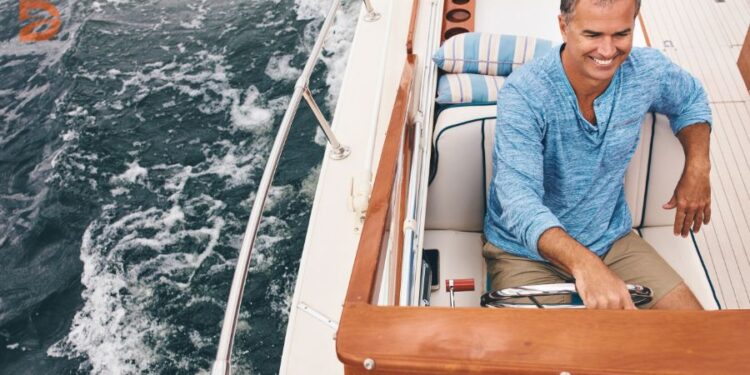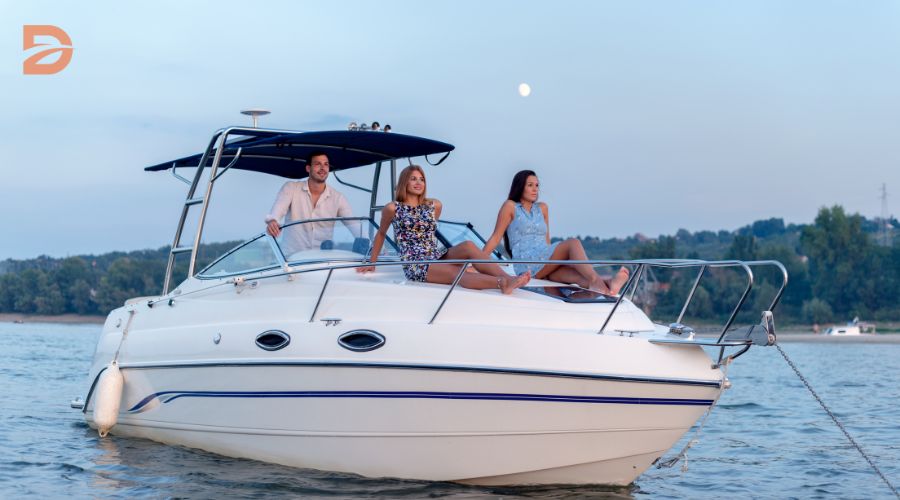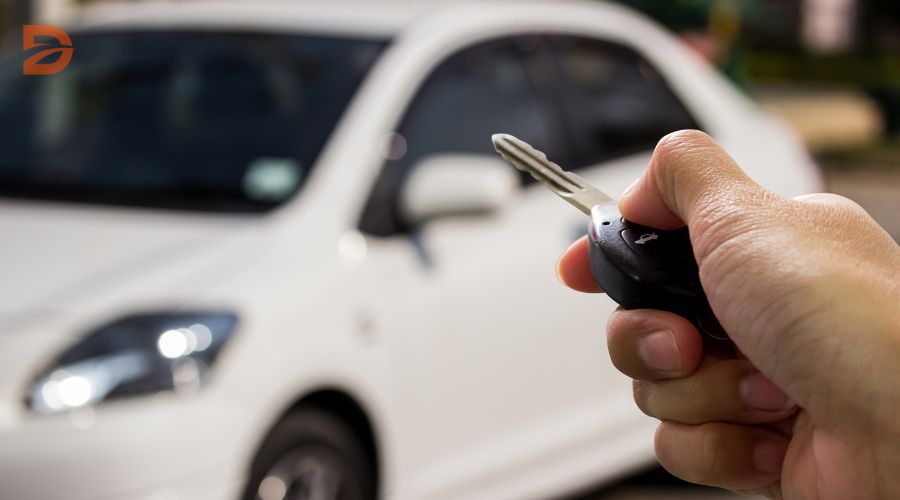Buying a boat is an exciting venture, but it can also be a financial minefield if you’re not careful. With so many factors to consider, from the initial purchase price to ongoing maintenance and docking fees, it’s easy to get overwhelmed. However, with the right approach, you can navigate the boat-buying process and find the perfect vessel for your needs. But the real question is, do you know the crucial steps to avoid common pitfalls and ensure you get the best deal?
In this comprehensive guide, we’ll walk you through the essential considerations and strategies to help you buy a boat without breaking the bank. From determining your budget to choosing between new and used options, and from thorough inspections to selecting the right boat for your needs, we’ve got you covered. Let’s dive in and ensure you sail off into the sunset with the boat of your dreams.
Key Takeaways
- Establish a realistic budget that accounts for both upfront and ongoing costs, including maintenance, repairs, and docking fees.
- Carefully weigh the advantages and disadvantages of purchasing a new versus a used boat to find the best fit for your needs and budget.
- Conduct a thorough inspection of any used boat, paying close attention to the hull, through-hull fittings, engine, and overall condition to avoid hidden problems.
- Select a boat that aligns with your intended use, ensuring it accommodates your family, activities, and storage requirements.
- Explore financing options, such as boat loans, to make the purchase more manageable and avoid depleting your savings.
Determining Your Boat Buying Budget
When preparing to purchase a boat, determining your budget is crucial. Consider both the upfront and ongoing costs associated with boat ownership. The initial purchase price can range from tens of thousands to millions of dollars, depending on the boat type and features. However, the expenses don’t stop there.
Considering Upfront and Ongoing Costs
In addition to the purchase price, you’ll need to factor in various ongoing costs, such as boat financing options, fuel, maintenance, repairs, storage or marina and docking fees. It’s essential to plan for these expenses to ensure you can afford the long-term ownership of your boat.
Factoring in Insurance, Taxes, and Fees
Boat insurance is not required but highly recommended, typically costing around 1.5% of the boat’s value per year. Additionally, you’ll need to consider state and local taxes, which can add up to $11,000 annually based on the boat’s value. These factors should be carefully accounted for in your boat-buying budget.
To ensure you have a comprehensive understanding of the financial commitment involved in owning a boat, it’s crucial to research and plan for all potential expenses. This will help you make an informed decision and avoid unexpected financial burdens during your boat ownership journey.
| Boat Financing Options | Boat Insurance Requirements | Marina and Docking Fees |
|---|---|---|
| Financing a compact family runabout or pontoon boat can cost as little as $250 per month. | Boat insurance can cost as little as $200 annually in northern states. | Marina berth prices and lease arrangements can differ significantly, with ideal locations possibly requiring early contact to secure availability for your boat size. |
| A new personal watercraft can be financed for less than $200 a month. | Insurance premiums for yachts can vary based on the location where you plan to keep your boat, impacting the initial premium amount. | Travel expenses for boat shows and sales marinas, including hotel stays and transfers, should be factored in as they can add up. |
Choosing Between New and Used Boats
Deciding between a new or used boat is a significant consideration for prospective boat buyers. Both options have their own advantages, making it crucial to weigh the factors that align with your budget and boating needs.
Advantages of Buying a New Boat
New boats offer several enticing benefits. You can customize the boat to your exact specifications, ensuring it meets your desired features and preferences. Additionally, new boats come with the peace of mind of a manufacturer’s warranty, protecting your investment. Moreover, you’ll have access to the latest environmentally friendly engine technologies, contributing to a more sustainable boating experience.
Benefits of Opting for a Used Boat
While new boats offer excitement and customization, used boats can be a more cost-effective option. Typically, used boats have already undergone the majority of their depreciation, allowing you to get more boats for fewer dollars. The average cost of owning a boat isn’t as extreme as many people, making pre-owned boats an accessible choice for a wider range of budgets.
Another advantage of buying a used boat is the extensive choice in the market. You can explore a wider selection of boat types and sizes to find the perfect fit for your needs and preferences. However, it’s important to conduct a thorough inspection and consider potential maintenance and repair costs associated with a pre-owned vessel.
Ultimately, the decision between a new or used boat should be based on your budget, mechanical aptitude, and the intended purpose of the boat. Weighing the pros and cons of each option will help you make an informed decision that aligns with your boating aspirations.
How to Buy a Boat
Purchasing a boat can be an exciting yet daunting experience. Whether you’re in the market for a new or used vessel, it’s essential to approach the process with a well-informed and strategic mindset. From understanding boat purchasing guides to navigating boating licenses and regulations, this comprehensive guide will help you buy a boat without getting ripped off.
Start by determining your budget. An entry-level new boat can easily be purchased for $250 to $300 per month, while a pre-owned boat might be more budget-friendly initially. Carefully consider the upfront and ongoing costs, including insurance, taxes, and fees, to ensure you make an informed decision.
- Familiarize yourself with the various boat types and sizes to ensure you select the one that best fits your needs and intended use.
- If buying a used boat, conduct a thorough inspection, including checking the Hull Identification Number (HIN), evaluating the hull and transom, and examining the through-hull fittings and wiring.
- Understand the boating licenses and regulations in your area, as they may impact your ability to operate the boat.
When it comes to the purchasing process, consider comparing boat dealers based on quality and location. Take a sea trial to test the boat’s performance with varying passenger loads, and consider hiring a marine surveyor for an independent inspection to provide peace of mind about the boat’s condition.
Remember, additional costs to consider include dealer fees, insurance, registration, accessories, storage, and upkeep. Discuss the accessories, including safety kits, and understand which are included in the boat purchase. Knowing the delivery process, maintenance scheduling, and post-purchase services is essential for a smooth ownership experience.
“Purchasing a boat is a significant investment, and it’s crucial to approach the process with a well-informed and strategic mindset.”
By following these steps and familiarizing yourself with the boat purchasing guide and boating licenses and regulations, you can navigate the boat-buying process with confidence and find the perfect vessel to suit your needs.
Inspecting a Used Boat Before Purchase
When purchasing a pre-owned boat, conducting a thorough inspection is crucial to ensure you don’t end up with hidden problems. Start by checking the Hull Identification Number (HIN), which is akin to a vehicle’s VIN. The HIN can provide valuable information about the boat’s history, such as whether it has been reported as stolen or salvaged.
Evaluating the Hull and Transom
Next, closely examine the hull and transom for any signs of previous damage or repairs. Look for uneven surfaces, wavy shapes, or mismatched colors and textures, as these can indicate structural issues. Pay special attention to the transom, as water infiltration can lead to significant problems.
Examining Through-Hull Fittings and Wiring
Lastly, inspect the through-hull fittings and wiring. These are common points of failure that can cause the boat to sink at the dock. Ensure all fittings are secure and the wiring is in good condition, free of corrosion or wear.
By conducting a comprehensive inspection, you can make an informed decision and avoid costly surprises down the line when purchasing a pre-owned boat. Remember, a boat’s size and type can also impact the inspection process, so be sure to tailor your approach accordingly.
Selecting the Right Boat for Your Needs
When purchasing a boat, it’s crucial to select a vessel that aligns with your intended purpose. The boat’s features and specifications should cater to your specific needs, whether you plan to use it for fishing, watersports, cruising, or overnight trips. By carefully considering the boat’s intended purpose, you can ensure that your investment provides the desired functionality and enhances your boating experience.
Evaluating Boat Types and Sizes
There is a wide variety of boat types available, each designed for distinct purposes. For example, All-Purpose Fishing Boats offer versatility with features like live wells, rod storage, and comfortable seating, making them ideal for multi-species anglers and family outings. On the other hand, Bass Boats are engineered for serious bass anglers, featuring powerful trolling motors, spacious casting decks, and ample storage.
If you plan to use your boat for overnight or extended trips, a Cabin Cruiser with sleeping quarters, a galley, and a bathroom may be the perfect choice. Conversely, Dinghies are small, versatile tenders often used to reach areas inaccessible by larger boats, available in rigid and inflatable designs for practical transportation and exploration.
The boat’s size is also a critical factor to consider, as it can significantly impact the boat’s performance, maintenance costs, and storage requirements. Larger boats generally require more frequent and costly maintenance, so it’s essential to balance your budget with the expected maintenance expenses.
Researching the various boat models and their specifications is crucial before making a purchase. Adhering to the manufacturer’s capacity guidelines is also important to ensure the safety and enjoyment of your boating adventures.
Considering Local Boating Licenses and Regulations
Before finalizing your boat selection, it’s important to familiarize yourself with the boating licenses and regulations in your area. Some bodies of water may have restrictions on the type of boat or engine size you can legally operate. Ensuring compliance with these requirements will not only keep you and your passengers safe, but it will also prevent any legal issues that could arise from using an unsuitable vessel.
By carefully considering the boat’s intended purpose, evaluating the various types and sizes, and understanding the local boating licenses and regulations, you can select the right boat that will enhance your time on the water and provide the functionality you desire.
Conclusion
Buying a boat is a significant investment, both financially and personally. By carefully considering your budget, weighing the pros and cons of new versus used options, conducting thorough inspections, and selecting a boat that meets your specific needs, you can make a confident and well-informed purchase without the risk of getting ripped off. Remember to factor in all the ongoing costs of boat ownership, such as insurance, taxes, storage, and maintenance, to ensure you can afford the long-term responsibilities of being a boat owner.
With the right preparation and research, you can enjoy the freedom, adventure, and leisure that come with owning a boat. Whether you’re in the market for a small personal watercraft or a larger, more luxurious vessel, the key is to understand the market, assess your budget, and work with trusted professionals to find the perfect boat for your lifestyle. By following the steps outlined in this how to buy a boat guide, you can make a smart and savvy purchase that will provide years of enjoyment on the water.
So, what are you waiting for? Start your search, explore your options, and take the first step towards becoming a proud boat owner today.
FAQ
How do I determine my boat-buying budget?
When determining your boat buying budget, consider both the upfront and ongoing costs. Upfront costs include the initial purchase price, which can range from tens of thousands to millions of dollars depending on the boat type. Ongoing costs include fuel, maintenance, repairs, storage or docking fees, and insurance.
What are the advantages and disadvantages of buying a new versus a used boat?
New boats offer advantages like customization, warranties, and the latest technology, but they come with a higher price tag and initial depreciation. Used boats are often more affordable and may have already undergone the majority of their depreciation, but they require more thorough inspections to identify any hidden issues.
What should I look for when inspecting a used boat?
When inspecting a used boat, start by checking the Hull Identification Number (HIN), which can provide information about the boat’s history. Next, closely examine the hull and transom for any signs of previous damage or repairs. Lastly, inspect the through-hull fittings and wiring, as these are common points of failure that can cause the boat to sink at the dock.
How do I choose the right boat for my needs?
Before starting your search, make two lists – one for your essential needs and another for your desired features. This will help you prioritize the boat’s functionality over aesthetic preferences. Additionally, consider the body of water you plan to use the boat in, as some vessels are not suitable for saltwater or open-ocean conditions.
What boating licenses and regulations do I need to be aware of?
Familiarize yourself with the boating licenses and regulations in your area, as they may impact your ability to operate the boat. Some areas require specific licenses or certifications, and there may be restrictions on the type of boat you can legally operate.











